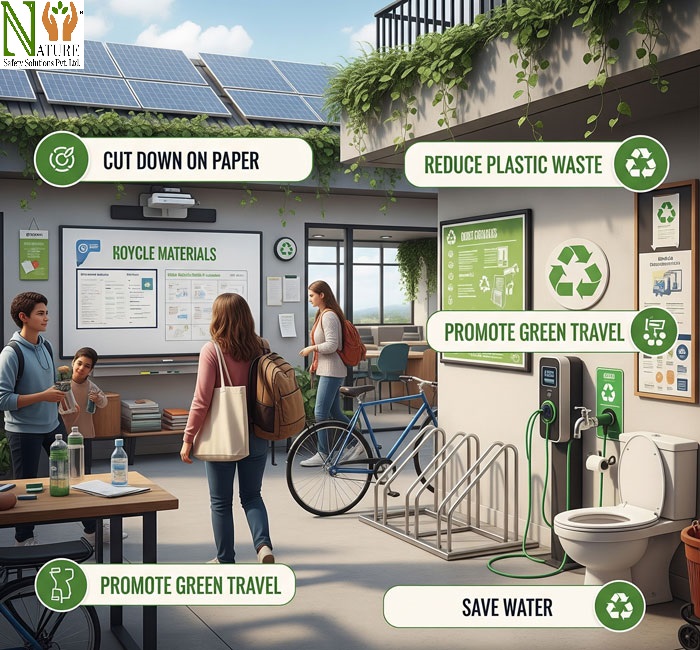Making your school or office eco-friendly is more important than ever. With climate change and environmental degradation becoming global concerns, small changes in everyday spaces can lead to big impacts.
Whether it’s reducing waste, saving energy, or promoting green habits, every effort adds up. By creating a more sustainable environment, we protect the planet and inspire others to do the same.

Save Energy Where You Can
Reducing energy use is one of the easiest ways to go green. Turn off lights, fans, and electronic devices when not in use. Encourage the use of natural daylight in classrooms and offices.
Replace old lights with energy-saving LED bulbs. Set air conditioners to efficient temperatures and avoid unnecessary use of heating systems. Over time, these small actions can lead to big savings and lower carbon emissions.
Cut Down on Paper
Paper waste is a common issue in both schools and offices. To reduce this, promote digital communication and note-taking. Use email or shared online documents instead of printed memos.
Encourage double-sided printing and reusing old paper for drafts or scratch work. Installing recycling bins near printers and desks helps remind people to think before they print.
Reduce Plastic Waste
Single-use plastics add up fast. Encourage everyone to bring reusable water bottles, coffee cups, and lunch containers. Avoid plastic cutlery and packaging in cafeterias or break rooms.
Choose biodegradable or reusable alternatives wherever possible. These small lifestyle changes reduce plastic pollution and create better habits for the future.
Promote Green Travel
Transportation plays a major role in pollution. Try to support carpooling, cycling, or walking, especially for short distances. Offer bike racks and safe storage areas for those who commute on two wheels.
Where possible, partner with local transport services to offer discounts or passes to employees or students who use public transit.
Add Plants and Green Spaces
Adding plants indoors improves air quality and creates a calming environment. In outdoor areas, planting trees or starting a garden brings people closer to nature.
Schools can use gardens for learning; offices can create green corners where employees can relax. Composting food waste to fertilize plants is another sustainable touch.
Sort and Manage Waste
Having separate bins for plastic, paper, food, and general waste is essential. Clear signage helps people understand what goes where. Organizing awareness drives or small workshops on waste segregation can help people develop good habits. Proper waste management keeps spaces clean and prevents unnecessary landfill use.
Involve Everyone
Creating a culture of sustainability needs teamwork. Form eco-clubs in schools or green teams in offices. Let them organize events, challenges, and awareness sessions. Highlight and reward eco-friendly behavior. When everyone feels involved, they are more likely to stay committed and make a bigger impact.
Save Water
Water is often wasted without us realizing it. Fix leaky tap as soon as possible. Use water-saving devices like low-flow taps and dual-flush toilets. Put up friendly reminders in restrooms and kitchens about turning taps off when not in use. Encourage smart usage without making it feel like a burden.
Raise Awareness
People take action when they understand why it matters. Use posters, announcements, or digital screens to share simple eco-friendly tips. Host talks or show short films on environmental topics. Make it fun—run quizzes, eco-bingo, or green-themed competitions to keep the topic engaging.
Make Green Habits a Routine
Sustainability becomes easier when it becomes part of everyday life. Regular reminders, visible support from leadership, and consistent action all help build a strong green culture. With time, what started as small steps can turn into long-lasting habits that benefit everyone.
Also read:-
